-
Toward advances in retinoblastoma genetics in Kenya Nat. Genet. (IF 31.7) Pub Date : 2024-11-11 Helen Dimaras, Beatrice Omweri, Daniel Muema, Loice Kanda, Rosaline Wanjiru Macharia, John Gitau, Catherine Mutinda, Kahaki Kimani, Wairimu Waweru, Stephen Gichuhi, Marianne W. Mureithi, Lucy Njambi
-
Genetic architecture of cerebrospinal fluid and brain metabolite levels and the genetic colocalization of metabolites with human traits Nat. Genet. (IF 31.7) Pub Date : 2024-11-11 Ciyang Wang, Chengran Yang, Daniel Western, Muhammad Ali, Yueyao Wang, Chia-Ling Phuah, John Budde, Lihua Wang, Priyanka Gorijala, Jigyasha Timsina, Agustin Ruiz, Pau Pastor, Maria Victoria Fernandez, Daniel J. Panyard, Corinne D. Engelman, Yuetiva Deming, Merce Boada, Amanda Cano, Pablo Garcia-Gonzalez, Neill R. Graff-Radford, Hiroshi Mori, Jae-Hong Lee, Richard J. Perrin, Laura Ibanez, Yun Ju Sung
-
Brca1 haploinsufficiency promotes early tumor onset and epigenetic alterations in a mouse model of hereditary breast cancer Nat. Genet. (IF 31.7) Pub Date : 2024-11-11 Carman Man-Chung Li, Alyssa Cordes, Michael U. J. Oliphant, S. Aidan Quinn, Mayura Thomas, Laura M. Selfors, Francesca Silvestri, Nomeda Girnius, Gianmarco Rinaldi, Jason J. Zoeller, Hana Shapiro, Christina Tsiobikas, Kushali P. Gupta, Shailja Pathania, Aviv Regev, S. Cigall Kadoch, Senthil K. Muthuswamy, Joan S. Brugge
-
Proteogenomic analysis of human cerebrospinal fluid identifies neurologically relevant regulation and implicates causal proteins for Alzheimer’s disease Nat. Genet. (IF 31.7) Pub Date : 2024-11-11 Daniel Western, Jigyasha Timsina, Lihua Wang, Ciyang Wang, Chengran Yang, Bridget Phillips, Yueyao Wang, Menghan Liu, Muhammad Ali, Aleksandra Beric, Priyanka Gorijala, Pat Kohlfeld, John Budde, Allan I. Levey, John C. Morris, Richard J. Perrin, Agustin Ruiz, Marta Marquié, Mercè Boada, Itziar de Rojas, Jarod Rutledge, Hamilton Oh, Edward N. Wilson, Yann Le Guen, Lianne M. Reus, Betty Tijms, Pieter
-
Specialized post-arterial capillaries facilitate adult bone remodelling Nat. Cell Biol. (IF 17.3) Pub Date : 2024-11-11 Vishal Mohanakrishnan, Kishor K. Sivaraj, Hyun-Woo Jeong, Esther Bovay, Backialakshmi Dharmalingam, M. Gabriele Bixel, Van Vuong Dinh, Milena Petkova, Isidora Paredes Ugarte, Yi-Tong Kuo, Malarvizhi Gurusamy, Brian Raftrey, Nelson Tsz Long Chu, Soumyashree Das, Pamela E. Rios Coronado, Martin Stehling, Lars Sävendahl, Andrei S. Chagin, Taija Mäkinen, Kristy Red-Horse, Ralf H. Adams
-
Amyloid is everywhere, but new treatments could stop the toxic build up Nat. Biotechnol. (IF 33.1) Pub Date : 2024-11-11
Amyloid deposits are present in the brains of cognitively impaired individuals, but also accumulate throughout the body. Some biotechs aim to keep these misfolded proteins in check to treat a range of diseases, including heart failure, ALS and Alzheimer’s disease.
-
Two places at once: superposed crystal could test whether gravity obeys quantum laws Nature (IF 50.5) Pub Date : 2024-11-11
Method could probe whether a key tenet of quantum mechanics applies to gravity, which has so far resisted quantum theory.
-
How I’m turning seaweed into biofuel for cars on Barbados Nature (IF 50.5) Pub Date : 2024-11-11
Mechanical engineer Legena Henry converts sargassum and rum-distillery waste water to produce sustainable natural gas for vehicles.
-
AI protein-prediction tool AlphaFold3 is now open source Nature (IF 50.5) Pub Date : 2024-11-11
The code underlying the Nobel-prize-winning tool for modelling protein structures can now be downloaded by academics.
-
Grass-roots grant-writing approaches can help researchers at small institutions to succeed Nature (IF 50.5) Pub Date : 2024-11-11
At small or minority-serving institutions, time and resources that are needed to draft successful grant proposals are often in short supply. But help is available.
-
Cosmic connections: our changing vision of the heavens Nature (IF 50.5) Pub Date : 2024-11-11
From maps of the stars to the multiverse, four enlightening art shows reveal diverse impressions of the cosmos.
-
Circular logic: understanding RNA’s strangest form yet Nature (IF 50.5) Pub Date : 2024-11-11
Circular RNAs are prevalent, mysterious and fascinating, but their study requires great care.
-
Daily briefing: First DNA from Pompeii body casts illuminates who victims were Nature (IF 50.5) Pub Date : 2024-11-08
Remains recovered from plaster casts of five people who died in the eruption of Mount Vesuvius have overturned some old assumptions about who they were. Plus, mitochondria can split into two different forms under stress.
-
Emissions from private jets are soaring Nature (IF 50.5) Pub Date : 2024-11-08
The popularity of private planes, the distance covered by flights and associated greenhouse-gas production are all on the rise.
-
Should Alzheimer’s be diagnosed without symptoms? Proposal to rely on blood tests roils scientists Nature (IF 50.5) Pub Date : 2024-11-08
Some researchers seek to establish a single abnormal result on a set of biomarker-based tests as sufficient to diagnose the disease.
-
Improving reporting standards for genetic variants Nat. Genet. (IF 31.7) Pub Date : 2024-11-08
The standardized naming of gene variants in both databases and publications is crucial to ensure their discoverability and clinical application. Efforts are underway in conjunction with the Human Genome Organization (HUGO) to develop a field standard for variant reporting through the use of validation software prior to publication.
-
Population survey of repeat expansion mutations Nat. Genet. (IF 31.7) Pub Date : 2024-11-08 Kyle Vogan
Pathogenic expansions of tandem repeat sequences underlie a diverse set of neurological conditions. To assess frequencies of repeat expansion mutations in the general population, Ibañez et al. analyzed whole-genome sequencing data from two large population-based studies comprising 82,176 individuals of diverse ancestries, focusing on 16 repeat expansion disorder loci for which they could accuracy classify
-
Genetics and dietary restriction impact lifespan Nat. Genet. (IF 31.7) Pub Date : 2024-11-08 Wei Li
Dietary restriction and genetics can impact health and lifespan in various species. Di Francesco et al. investigated the effects of caloric restriction and intermittent fasting on the lifespan of 960 genetically diverse female mice, in which hundreds of physiological traits were profiled. These diverse outbred mice were randomized to one of five diet groups: ad libitum; 1 day or 2 consecutive days
-
Missense variation affects protein cellular localization Nat. Genet. (IF 31.7) Pub Date : 2024-11-08 Michael Fletcher
Genome sequencing of large cohorts has identified many protein-coding missense variants, the functional consequences of which remain difficult to predict computationally. Lacoste et al. use a new high-throughput screening approach to characterize the effects of known pathogenic variants on protein localization. They analyzed a total of 3,448 variants, many with known or likely pathogenicity in the
-
Single-cell 3D multi-omics during human brain development Nat. Genet. (IF 31.7) Pub Date : 2024-11-08 Chiara Anania
Previous studies have characterized chromatin conformation and DNA methylation dynamics in early postnatal and adult brain tissues. To gain single-cell resolution, Heffel et al. used single-nucleus methyl-3C sequencing to profile chromatin conformation and DNA methylation during human prenatal development of the prefrontal cortex and hippocampus and compared these with postnatal and adult tissues.
-
Multimodal optical pooled screening with CRISPRmap Nat. Genet. (IF 31.7) Pub Date : 2024-11-08 Wei Li
Optical pooled CRISPR screens have been widely adopted for functional genomic studies. Gu et al. present CRISPRmap, an optical pooled screening approach that integrates sequencing-free in situ barcode readout with cyclic immunofluorescence and RNA detection. The cyclical hybridization readout method improves the specificity and sensitivity of barcode detection through combinatorial hybridization of
-
Spatiotemporal regulation of germline genes by piRNAs Nat. Genet. (IF 31.7) Pub Date : 2024-11-08 Petra Gross
Mammalian pachytene PIWI-interacting RNAs (piRNAs) are expressed during the pachytene stage in spermatocytes with proposed roles in the regulation of meiosis. However, their specific functions and targets remain elusive. In this study, Swathi Arur and colleagues interrogate the function of 21URNAs, the Caenorhabditis elegans piRNAs, and the PIWI homolog prg-1 in the male germline. They show that loss
-
Optimizing combination immunotherapy in lung cancer Nat. Genet. (IF 31.7) Pub Date : 2024-11-08 Safia Danovi
The combination of different checkpoint inhibitors has been shown to benefit some patients with non-small cell lung cancer (NSCLC), but identifying those who are most likely to benefit and sparing patients who will not remains a crucial challenge. Skoulidis et al. show that tumors with mutations in KEAP1 and/or STK11 are more likely to respond to dual PD-L1 and CTLA4 blockade (with the inhibitors durvalumab
-
Cell state transitions are decoupled from cell division during early embryo development Nat. Cell Biol. (IF 17.3) Pub Date : 2024-11-08 Kalki Kukreja, Bill Z. Jia, Sean E. McGeary, Nikit Patel, Sean G. Megason, Allon M. Klein
-
‘Rapture and beauty’: a writer’s portrait of the International Space Station Nature (IF 50.5) Pub Date : 2024-11-08
Samantha Harvey talks to Nature about her book Orbital
-
What Trump’s election win could mean for AI, climate and health Nature (IF 50.5) Pub Date : 2024-11-08
Donald Trump made numerous promises during his presidential campaign that could affect scientists and science policy. Will they be implemented once he is president?
-
-
World-first stem-cell treatment restores vision in people Nature (IF 50.5) Pub Date : 2024-11-08
The treatment, given to four people with damaged corneas, seems safe but needs to be tested in larger trials.
-
This scientist treated her own cancer with viruses she grew in the lab Nature (IF 50.5) Pub Date : 2024-11-08
Virologist Beata Halassy says self-treatment worked and was a positive experience — but researchers warn that it is not something others should try.
-
Grass-roots pressure grows to boost support for breastfeeding scientists Nature (IF 50.5) Pub Date : 2024-11-08
Norway offers up to 2 hours of paid time per day for breastfeeding. Why do other countries’ parental support policies lag so far behind?
-
Evolving antibody response to SARS-CoV-2 antigenic shift from XBB to JN.1 Nature (IF 50.5) Pub Date : 2024-11-07 Fanchong Jian, Jing Wang, Ayijiang Yisimayi, Weiliang Song, Yanli Xu, Xiaosu Chen, Xiao Niu, Sijie Yang, Yuanling Yu, Peng Wang, Haiyan Sun, Lingling Yu, Jing Wang, Yao Wang, Ran An, Wenjing Wang, Miaomiao Ma, Tianhe Xiao, Qingqing Gu, Fei Shao, Youchun Wang, Zhongyang Shen, Ronghua Jin, Yunlong Cao
The continuous evolution of SARS-CoV-2, particularly the emergence of BA.2.86/JN.1 lineage replacing XBB, necessitates re-evaluation of vaccine compositions 1–3. Here, we provide a comprehensive analysis of the humoral immune response to XBB and JN.1 human exposure. We demonstrate the antigenic distinctiveness of XBB and JN.1 lineages in SARS-CoV-2-naive individuals, and JN.1 infection elicits superior
-
Will South Africa become first country to accept controversial form of human genome editing? Nature (IF 50.5) Pub Date : 2024-11-07
Scientists raise the alarm following updated research ethics guidelines on heritable human genome editing.
-
First DNA from Pompeii body casts illuminates who victims were Nature (IF 50.5) Pub Date : 2024-11-07
The sex and ancestry of five people who died in the eruption are revealed by genetic material embedded in the casts.
-
Why do wet dogs shake themselves dry? Neuroscience has an answer Nature (IF 50.5) Pub Date : 2024-11-07
Deciphering how mammals respond to sensations through their fur could inspire further research on skin sensitivity.
-
Daily briefing: World’s first wooden satellite heads for space Nature (IF 50.5) Pub Date : 2024-11-07
A satellite made of wood has been sent to the International Space Station, where it’ll later be released into orbit. Plus, we learn that snapshots of atomic nuclei smashing together can show us what shape they were.
-
No hearing aids needed: bats’ ears stay keen well into old age Nature (IF 50.5) Pub Date : 2024-11-06
Elderly big brown bats showed little sign of age-related degradation in the inner ear.
-
Bioelastic state recovery for haptic sensory substitution Nature (IF 50.5) Pub Date : 2024-11-06 Matthew T. Flavin, Kyoung-Ho Ha, Zengrong Guo, Shupeng Li, Jin-Tae Kim, Tara Saxena, Dimitrios Simatos, Fatimah Al-Najjar, Yuxuan Mao, Shishir Bandapalli, Chengye Fan, Dongjun Bai, Zhuang Zhang, Yanlin Zhang, Eunhye Flavin, Kenneth E. Madsen, Yi Huang, Luoqian Emu, Jingyang Zhao, Jae-Young Yoo, Minsu Park, Jaeho Shin, Aaron G. Huang, Hee-Sup Shin, J. Edward Colgate, Yonggang Huang, Zhaoqian Xie, Hanqing
-
New CERN chief pledges to forge ahead with $17-billion supercollider Nature (IF 50.5) Pub Date : 2024-11-07
Physicist Mark Thomson will face several challenges — including bringing in enough money to build a colossal new particle-smashing ‘Higgs factory’.
-
The Warburg Effect is the result of faster ATP production by glycolysis than respiration Proc. Natl. Acad. Sci. U.S.A. (IF 9.4) Pub Date : 2024-11-08 Matthew A. Kukurugya, Saharon Rosset, Denis V. Titov
Many prokaryotic and eukaryotic cells metabolize glucose to organism-specific by-products instead of fully oxidizing it to carbon dioxide and water—a phenomenon referred to as the Warburg Effect. The benefit to a cell is not fully understood, given that partial metabolism of glucose yields an order of magnitude less adenosine triphosphate (ATP) per molecule of glucose than complete oxidation. Here
-
Ecological restoration enhances dryland carbon stock by reducing surface soil carbon loss due to wind erosion Proc. Natl. Acad. Sci. U.S.A. (IF 9.4) Pub Date : 2024-11-08 Jian Song, Shiqiang Wan, Kesheng Zhang, Songbai Hong, Jianyang Xia, Shilong Piao, Ying-Ping Wang, Jiquan Chen, Dafeng Hui, Yiqi Luo, Shuli Niu, Jingyi Ru, Hao Xu, Mengmei Zheng, Weixing Liu, Haidao Wang, Menghao Tan, Zhenxing Zhou, Jiayin Feng, Xueli Qiu
Enhancing terrestrial carbon (C) stock through ecological restoration, one of the prominent approaches for natural climate solutions, is conventionally considered to be achieved through an ecological pathway, i.e., increased plant C uptake. By conducting a comprehensive regional survey of 4279 1 × 1 m 2 plots at 517 sites across China’s drylands and a 13-y manipulative experiment in a semiarid grassland
-
Mineral-associated organic matter is heterogeneous and structured by hydrophobic, charged, and polar interactions Proc. Natl. Acad. Sci. U.S.A. (IF 9.4) Pub Date : 2024-11-08 Thomas R. Underwood, Ian C. Bourg, Kevin M. Rosso
The formation of mineral-associated organic matter (MAOM) is a key phenomenon that may explain the slow turnover rates of carbon in soil organic matter (SOM). Despite this, important details pertaining to the structure and dynamics of MAOM remain unknown. In the present study, we use replica-exchange molecular dynamics simulations to gain insight into the structure of MAOM on the surface of prototypical
-
Scale invariance in early embryonic development Proc. Natl. Acad. Sci. U.S.A. (IF 9.4) Pub Date : 2024-11-08 Miloš Nikolić, Victoria Antonetti, Feng Liu, Gentian Muhaxheri, Mariela D. Petkova, Martin Scheeler, Eric M. Smith, William Bialek, Thomas Gregor
The expression of a few key genes determines the body plan of the fruit fly. We show that the spatial expression patterns for several of these genes scale precisely with embryo size. Discrete positional markers such as the peaks in striped patterns or the boundaries of expression domains have positions along the embryo’s major axis proportional to embryo length, accurate to within 1%. Further, the
-
Tracking the topology of neural manifolds across populations Proc. Natl. Acad. Sci. U.S.A. (IF 9.4) Pub Date : 2024-11-08 Iris H. R. Yoon, Gregory Henselman-Petrusek, Yiyi Yu, Robert Ghrist, Spencer LaVere Smith, Chad Giusti
Neural manifolds summarize the intrinsic structure of the information encoded by a population of neurons. Advances in experimental techniques have made simultaneous recordings from multiple brain regions increasingly commonplace, raising the possibility of studying how these manifolds relate across populations. However, when the manifolds are nonlinear and possibly code for multiple unknown variables
-
DeSide: A unified deep learning approach for cellular deconvolution of tumor microenvironment Proc. Natl. Acad. Sci. U.S.A. (IF 9.4) Pub Date : 2024-11-08 Xin Xiong, Yerong Liu, Dandan Pu, Zhu Yang, Zedong Bi, Liang Tian, Xuefei Li
Cellular deconvolution via bulk RNA sequencing (RNA-seq) presents a cost-effective and efficient alternative to experimental methods such as flow cytometry and single-cell RNA-seq (scRNA-seq) for analyzing the complex cellular composition of tumor microenvironments. Despite challenges due to heterogeneity within and among tumors, our innovative deep learning–based approach, DeSide, shows exceptional
-
Decomposing dynamical subprocesses for compositional generalization Proc. Natl. Acad. Sci. U.S.A. (IF 9.4) Pub Date : 2024-11-08 Lennart Luettgau, Tore Erdmann, Sebastijan Veselic, Kimberly L. Stachenfeld, Zeb Kurth-Nelson, Rani Moran, Raymond J. Dolan
A striking feature of human cognition is an exceptional ability to rapidly adapt to novel situations. It is proposed this relies on abstracting and generalizing past experiences. While previous research has explored how humans detect and generalize single sequential processes, we have a limited understanding of how humans adapt to more naturalistic scenarios, for example, complex, multisubprocess environments
-
Lamination-based organoid spatially resolved transcriptomics technique for primary lung and liver organoid characterization Proc. Natl. Acad. Sci. U.S.A. (IF 9.4) Pub Date : 2024-11-08 Shaohua Ma, Wanlong Wang, Jiaqi Zhou, Shangfeng Liao, Cheng Hai, Yibo Hou, Zhichun Zhou, Zitian Wang, Yingshi Su, Yu Zhu, Xiaoyong Dai, Yuan Zhao, Sha Liao, Yongde Cai, Xun Xu
Spatial-transcriptomics technologies have demonstrated exceptional performance in characterizing brain and visceral organ tissues, as well as brain and retinal organoids. However, it has not yet been proven whether spatial transcriptomics can effectively characterize primary tissue-derived organoids, as the standardized tissue sectioning or slicing methods are not applicable for such organoids. Herein
-
Spin–orbit enabled unconventional Stoner magnetism Proc. Natl. Acad. Sci. U.S.A. (IF 9.4) Pub Date : 2024-11-08 Yue Yu, Tatsuya Shishidou, Shuntaro Sumita, Michael Weinert, Daniel F. Agterberg
The Stoner instability remains a cornerstone for understanding metallic ferromagnets. This instability captures the interplay of Coulomb repulsion, Pauli exclusion, and twofold fermionic spin degeneracy. In materials with spin–orbit coupling, this fermionic spin is generalized to a twofold degenerate pseudospin which is typically believed to have symmetry properties as spin. Here, we identify a distinct
-
A newborn F-box gene blocks gene flow by selectively degrading phosphoglucomutase in species hybrids Proc. Natl. Acad. Sci. U.S.A. (IF 9.4) Pub Date : 2024-11-08 Dongying Xie, Yiming Ma, Pohao Ye, Yiqing Liu, Qiutao Ding, Gefei Huang, Marie-Anne Félix, Zongwei Cai, Zhongying Zhao
The establishment of reproductive barriers such as postzygotic h ybrid i ncompatibility (HI) remains the key to speciation. Gene duplication followed by differential functionalization has long been proposed as a major model underlying HI, but little supporting evidence exists. Here, we demonstrate that a newborn F-box gene, Cni-neib-1 , of the nematode Caenorhabditis nigoni specifically inactivates
-
Central place foragers, prey depletion halos, and how behavioral niche partitioning promotes consumer coexistence Proc. Natl. Acad. Sci. U.S.A. (IF 9.4) Pub Date : 2024-11-08 Claus Rueffler, Laurent Lehmann
Many seabirds congregate in large colonies for breeding, a time when they are central place foragers. An influential idea in seabird ecology posits that competition during breeding results in an area of reduced prey availability around colonies, a phenomenon known as Ashmole’s halo, and that this limits colony size. This idea has gained empirical support, including the finding that species coexisting
-
Architecture of the Toxoplasma gondii apical polar ring and its role in gliding motility and invasion Proc. Natl. Acad. Sci. U.S.A. (IF 9.4) Pub Date : 2024-11-08 Bingjian Ren, Romuald Haase, Sharon Patray, Quynh Nguyen, Bohumil Maco, Nicolas Dos Santos Pacheco, Yi-Wei Chang, Dominique Soldati-Favre
In Toxoplasma gondii , the conoid comprises a cone with spiraling tubulin fibers, preconoidal rings, and intraconoidal microtubules. This dynamic organelle undergoes extension and retraction through the apical polar ring (APR) during egress, gliding, and invasion. The forces involved in conoid extrusion are beginning to be understood, and its role in directing F-actin flux to the pellicular space,
-
Folding a single high-genus surface into a repertoire of metamaterial functionalities Proc. Natl. Acad. Sci. U.S.A. (IF 9.4) Pub Date : 2024-11-08 Xiangxin Dang, Stefano Gonella, Glaucio H. Paulino
The concepts of origami and kirigami have often been presented separately. Here, we put forth a synergistic approach—the folded kirigami—in which kirigami assemblies are complemented by means of folding, typical of origami patterns. Besides the emerging patterns themselves, the synergistic approach also leads to topological mechanical metamaterials. While kirigami metamaterials have been fabricated
-
Microbial metabolism disrupts cytokine activity to impact host immune response Proc. Natl. Acad. Sci. U.S.A. (IF 9.4) Pub Date : 2024-11-08 Eleanor K. P. Marshall, Catarina Nunes, Sophie Burbaud, Crystal M. Vincent, Natalie O. Munroe, Carolina J. Simoes da Silva, Ashima Wadhawan, William H. Pearson, Jasper Sangen, Lucas Boeck, R. Andres Floto, Marc S. Dionne
Host–pathogen interactions are shaped by the metabolic status of both the host and pathogen. The host must regulate metabolism to fuel the immune response, while the pathogen must extract metabolic resources from the host to enable its own survival. In this study, we focus on the metabolic interactions of Mycobacterium abscessus with Drosophila melanogaster . We identify MAB_1132c as an asparagine
-
A conserved mechanism couples cytosolic domain movements to pore gating in the TRPM2 channel Proc. Natl. Acad. Sci. U.S.A. (IF 9.4) Pub Date : 2024-11-08 Balázs Tóth, Yuefeng Jiang, Andras Szollosi, Zhe Zhang, László Csanády
Transient Receptor Potential Melastatin 2 (TRPM2) cation channels contribute to immunocyte activation, insulin secretion, and central thermoregulation. TRPM2 opens upon binding cytosolic Ca 2+ and ADP ribose (ADPR). We present here the 2.5 Å cryo-electronmicroscopy structure of TRPM2 from Nematostella vectensis (nvTRPM2) in a lipid nanodisc, complexed with Ca 2+ and ADPR-2′-phosphate. Comparison with
-
Challenging a decades-old paradigm: ProB and ProA do not channel the unstable intermediate in proline synthesis after all Proc. Natl. Acad. Sci. U.S.A. (IF 9.4) Pub Date : 2024-11-08 Matilda S. Newton, Ashley L. Azadeh, Andrew B. Morgenthaler, Shelley D. Copley
The pathway for synthesis of proline in most forms of life produces a highly unstable intermediate, γ-L-glutamyl 5-phosphate (GP). For nearly 70 y, channeling of this intermediate from the active site of glutamate 5-kinase to the active site of GP reductase has been believed to protect GP from cyclization to a dead-end product. However, the evidence presented in support of this idea is not conclusive
-
Light-sensitive Ca 2+ signaling in the mammalian choroid Proc. Natl. Acad. Sci. U.S.A. (IF 9.4) Pub Date : 2024-11-08 Ahmed M. Eltanahy, Alex Aupetit, Ethan D. Buhr, Russell N. Van Gelder, Albert L. Gonzales
The choroid is the thin, vasculature-filled layer of the eye situated between the sclera and the retina, where it serves the metabolic needs of the light-sensing photoreceptors in the retina. Illumination of the interior surface of the back of the eye (fundus) is a critical regulator of subretinal fluid homeostasis, which determines the overall shape of the eye, but it is also important for choroidal
-
CRISPRi/a screens in human iPSC-cardiomyocytes identify glycolytic activation as a druggable target for doxorubicin-induced cardiotoxicity Cell Stem Cell (IF 19.8) Pub Date : 2024-11-07 Chun Liu, Mengcheng Shen, Yanxia Liu, Amit Manhas, Shane Rui Zhao, Mao Zhang, Nadjet Belbachir, Lu Ren, Joe Z. Zhang, Arianne Caudal, Masataka Nishiga, Dilip Thomas, Angela Zhang, Huaxiao Yang, Yang Zhou, Mohamed Ameen, Nazish Sayed, June-Wha Rhee, Lei S. Qi, Joseph C. Wu
-
All roads lead to cholesterol: Modulating lipid biosynthesis in multiple sclerosis patient-derived models Cell Stem Cell (IF 19.8) Pub Date : 2024-11-07 Sophie Eichhorner, Larissa Traxler, Oliver Borgogno, Jerome Mertens
Studies from Ionescu et al.1 and Clayton et al.2 using multiple sclerosis (MS) patient-derived cell models underscore cholesterol metabolism’s role in inflammatory and dysfunctional cell phenotypes in the disease. Inhibiting cholesterol biosynthesis ameliorated critical cellular phenotypes, emphasizing the need to further investigate this pathway as a potential target for MS treatment.
-
Nurturing protectors: Macrophages in the human pancreatic islet Cell Stem Cell (IF 19.8) Pub Date : 2024-11-07 Christopher Z.W. Lee, Francesca M. Spagnoli
Two recent publications in Cell Stem Cell, Yang et al.1 and Migliorini et al.,2 utilized pluripotent stem cell-derived co-culture systems to explore the role of macrophages within the pancreatic islet during development and disease states.
-
Trained immunity in the bone marrow: Hub of autoimmunity Cell Stem Cell (IF 19.8) Pub Date : 2024-11-07 Mihai G. Netea, Leo A.B. Joosten
An inappropriate induction of trained immunity in the bone marrow progenitors of immune cells has been described to underlie chronic inflammatory processes. Mills and colleagues’ recently published paper in Cell Stem Cell shows that maladaptive trained immunity drives inflammation in autoimmune processes,1 opening a new area of research in autoimmunity.
-
To BE or to PE: Prime editors provide more choices for epitope-editing-based immunotherapy Cell Stem Cell (IF 19.8) Pub Date : 2024-11-07 S.M. Yin, D.L. Li
Epitope editing is a promising strategy for protecting hematopoietic cells from eradication by immunotherapies. Recently, in Cell Stem Cell, Ji et al. applied both base editing (BE) and prime editing (PE) to alter the epitope of CD123 in hematopoietic stem cells for CAR-T therapy against acute myeloid leukemia.1









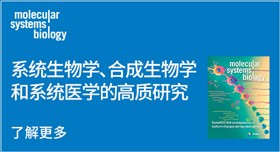

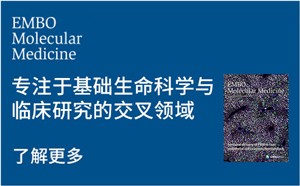





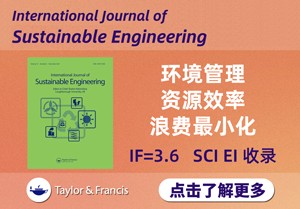
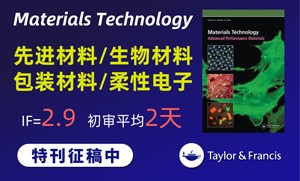
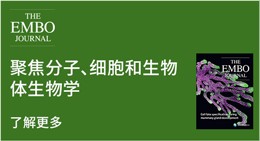
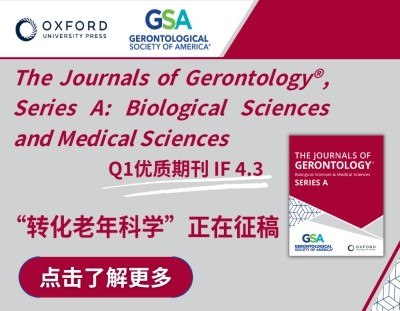
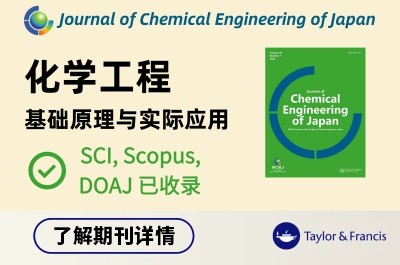



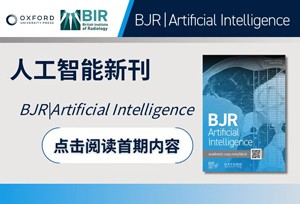




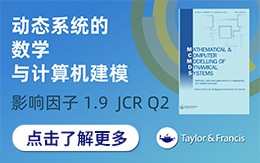
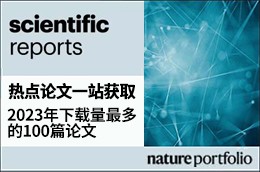
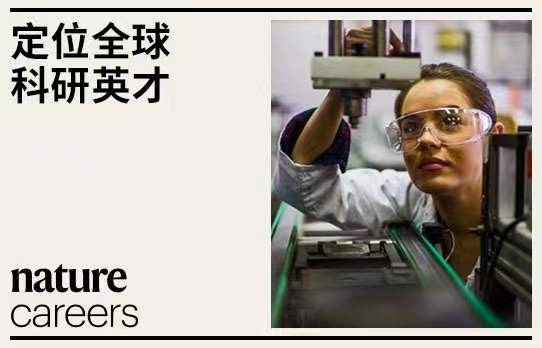

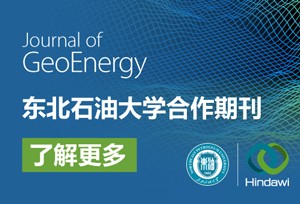
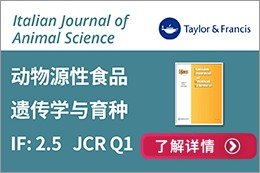
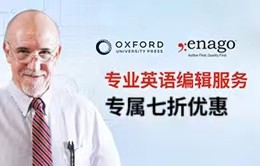


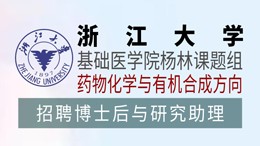










 京公网安备 11010802027423号
京公网安备 11010802027423号